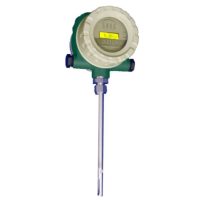
Sage 300 Flow Meter
The Sage 300 is a low-cost thermal mass flow meter offering the same level of accuracy, low-end sensitivity, repeatability, response time, turndown, and resolution as the Sage Prime®, without the bells and whistles.
Sage 300 Thermal Mass Flow Meter
The Sage 300™ is the obvious choice for those customers who want the benefits of mass flow measurement with excellent performance, yet are willing to sacrifice some premium features. When comparing the 300 to the Sage Prime, one will notice that instead of the advanced graphical display simple screen providing flow rate, total flow, and temperature.
Another noticeable deviation from the Prime is that the 300 doesn’t offer Sage’s award-winning in-situ calibration verification. For this reason, if verifying calibration while in the field is essential, purchase the Sage Paramount.
The 300 is packed with features and benefits. The meter is agency-approved for use in Class I, Division 2 hazardous areas, and CE approved. It is available with 24 VDC or 90-265 VAC input power, and like other Sage meters, it has the lowest power dissipation in the industry. The 300 offers 4-20 mA signal and pulsed output of totalized flow, and Modbus RTU with RS-485 communications is optional.
The flow meter is available with integral or remote electronics. The remote design offers lead length compensation up to 1000 feet and uses a NEMA 4 and explosion-proof junction box. The meter also comes calibrated from the Sage NIST traceable calibration lab preconfigured with the specified application's process and installation parameters.
If you need to verify that the meter is still in calibration while in the field, consider the Sage Prime.
Applications for Thermal Mass Flow Meters
Natural Gas - Thermal mass flow meters are not AGA-approved for custody transfer. However, the meters are acceptable to measure natural gas flow in combustion control, GHG reporting, submetering, and real-time gas measurement in pipelines.
Flare Gas - Gas flares burn off the excess or unintentionally released gases. Flares are in natural gas production and distribution, oil refineries, wastewater treatment, and the steel industry. In these applications, thermal mass flow meters are ideal for measuring the gas flow.
Energy Management - As industries adopt energy management systems, there is a need to establish baseline gas usage and continuously monitor to improve the process. Within these systems, thermal mass flow meters excel in natural gas consumption, combustion control, and compressed air monitoring.
Combustion - Combustion is the process of burning fuel in the presence of oxygen, and its efficiency depends on the air-to-fuel ratio. By measuring the air and natural gas flow to a combustion device, the user can create optimum operating conditions to achieve complete combustion.
Biogas - Thermal mass flow meters measure biogas and offer distinct advantages over alternative flow meters. This meter type satisfies gas measurement at wastewater treatment plants, in waste-to-energy projects, and at landfills.
Industrial Air –Air is a mixture of gases. Many industrial and commercial applications use thermal mass flow meters, including combustion air, compressed air, spray drying, and aeration air.
